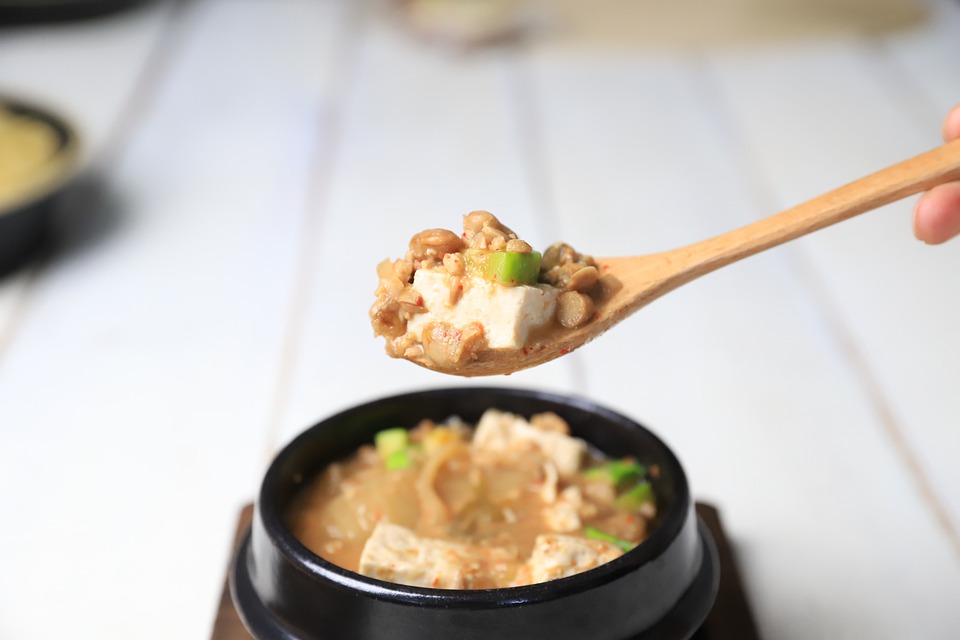[ad_1]
Miso is a traditional Japanese seasoning produced by fermenting soybeans with salt and koji (a type of fungus). It is a versatile ingredient that can be used in a variety of dishes, from soups and marinades to dressings and desserts. In recent years, miso has gained popularity in the culinary world, as chefs and home cooks alike have discovered creative new ways to incorporate this flavorful and nutritious ingredient into their recipes. In this article, we will explore some innovative uses for miso in modern cuisine, as well as provide some delicious recipes to inspire your own culinary experiments.
Modern Uses for Miso
While miso has long been a staple in Japanese cuisine, it is increasingly being used in a variety of other culinary traditions. Its rich, umami flavor adds depth and complexity to dishes, making it a popular ingredient for chefs looking to elevate their cooking. Some modern uses for miso include:
- Miso Soup: Miso soup is a classic Japanese dish, but it can be easily adapted to include other ingredients such as tofu, seaweed, and vegetables.
- Miso Glazes and Marinades: Miso can be used to make delicious glazes and marinades for meat, fish, and vegetables. Its salty-sweet flavor adds depth and richness to grilled or roasted dishes.
- Miso Dressings: Miso can be used as a base for salad dressings, adding a savory kick to your favorite greens.
- Miso Caramel: Miso can be incorporated into caramel sauce or desserts for a unique, salty-sweet flavor combination.
- Miso Butter: Miso can be mixed with butter to create a flavorful spread for bread, vegetables, and more.
Delicious Miso Recipes
Now that we’ve explored some modern uses for miso, let’s dive into some creative recipes that highlight the versatility of this traditional ingredient.
Miso-Glazed Salmon
This miso-glazed salmon is a simple yet elegant dish that showcases the savory-sweet flavors of miso. The marinade can also be used for other types of fish or tofu.
- 4 salmon fillets
- 3 tablespoons white miso paste
- 2 tablespoons mirin (Japanese sweet rice wine)
- 1 tablespoon soy sauce
- 1 tablespoon honey
- 1 teaspoon grated ginger
- 1 teaspoon sesame oil
Instructions:
- In a small bowl, whisk together the miso paste, mirin, soy sauce, honey, ginger, and sesame oil.
- Place the salmon fillets in a shallow dish and pour the marinade over them, turning to coat. Cover and refrigerate for at least 30 minutes, or up to 4 hours.
- Preheat the broiler. Remove the salmon from the marinade and place on a broiler pan or baking sheet. Broil for 6-8 minutes, or until the salmon is cooked through and the glaze is caramelized.
Miso-Tahini Dressing
This creamy, tangy dressing is perfect for drizzling over salads, grain bowls, or roasted vegetables.
- ¼ cup white miso paste
- 2 tablespoons tahini
- 2 tablespoons rice vinegar
- 1 tablespoon honey
- 1 tablespoon sesame oil
- 2-3 tablespoons water, as needed
Instructions:
- In a small bowl, whisk together the miso paste, tahini, rice vinegar, honey, and sesame oil.
- Gradually add water, 1 tablespoon at a time, until the dressing reaches your desired consistency. Taste and adjust the seasoning as needed.
- Drizzle the dressing over your favorite salad or dish, and enjoy!
Conclusion
Miso is a versatile and delicious ingredient that can add depth and complexity to a wide range of dishes. Whether you’re making a traditional Japanese soup or experimenting with new flavor combinations, miso is sure to elevate your cooking to new heights. With its rich umami flavor and nutritious benefits, miso is a valuable addition to any modern kitchen.
FAQs
Is miso gluten-free?
While traditional miso is gluten-free, some modern variations may contain added ingredients that could contain gluten. It’s always best to check the label and choose a certified gluten-free miso if you have a gluten sensitivity.
Can I substitute miso for other ingredients in recipes?
Miso has a unique flavor profile, so it may not have a direct substitute in all recipes. However, you can experiment with using miso in place of other savory ingredients such as soy sauce, anchovy paste, or bouillon for added depth and richness.
How long does miso last?
When stored in the refrigerator, miso can last for several months or even up to a year. The flavor may become more intense with time, so it’s best to use it within a reasonable timeframe for the freshest taste.
[ad_2]





Comments